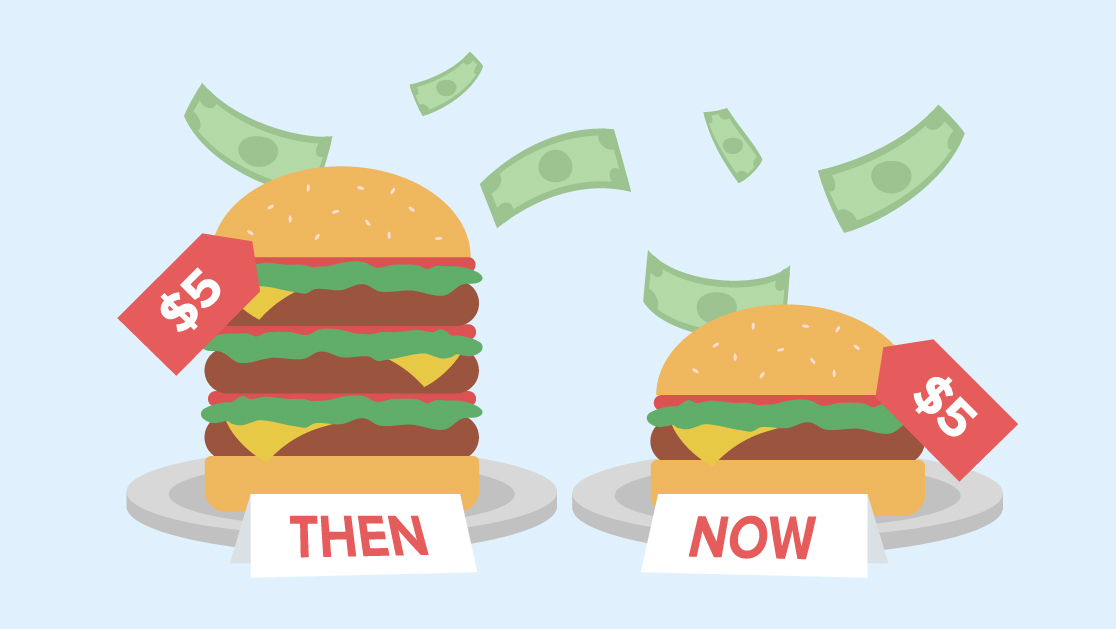What Higher Inflation Means for Your Restaurant
Find out how higher inflation may affect your restaurant and what options you have to overcome it.

Find out how higher inflation may affect your restaurant and what options you have to overcome it.

The past few years have been hard for everyone. But it’s been especially challenging for restaurant owners and staff.
And even if it seems like the most uncertain of times are over, there’s no time for respite just yet. We’re only now starting to see how inflation behaves in restaurants, and it’s not pretty.
Not to be dramatic, but there’s no variety of slip-resistant footwear that can save you from this mess. Let’s take a look at how inflation affects the hospitality industry (specifically restaurants).
Maybe you’ve been hearing the word “inflation” thrown around so often that you’re at the point where you’re too afraid to ask for a definition. Let’s back up a bit and look at the larger picture.
Simply put, inflation is what happens when the price of everything goes up. This includes prices for goods, services, commodities — the list could go on to include everything that you’d ever need to buy.
This price increase in itself isn’t necessarily a problem. The problem emerges when our purchasing power stays the same while prices increase. Suddenly, the average individual can’t buy as much with their money as they could before. This makes it harder for people (and businesses) to get by.
Consumer prices are up 9.1%, the largest increase in 40 years. There are many different causes for inflation, and right now we’re facing the perfect storm. Instability in Europe, pandemic-related supply chain issues, and a sudden demand for certain goods and services are all contributing factors.
We’re not far enough removed from the plight of restaurants during the pandemic to forget their struggles just yet. The impact of COVID-19 on the industry was devastating.
For many, the reality was having to let go of valued employees. For others, it meant pivoting to a takeout-only model, as they worked hard to feed hungry office-turned-work-from-home employees and exhausted healthcare employees.
For many restaurant owners, it meant facing the hard decision to shut down their business — a sad outcome for more than 100,000 establishments across the country.
So while it may seem like we’re hearing less about restaurants going out of business compared to the beginning of the pandemic, the hospitality industry as a whole is far from out of the woods.
For the businesses that survived, inflation represents a whole new battle, and it’s a complex one at that. Inflation affects life in the hospitality industry (specifically restaurants) in the following ways:
The above is obviously not a recipe for success (pun intended). Luckily, though, folks in the restaurant industry are a scrappy (pun again) bunch and have a few options on their plate (sorry I’ll stop) before they throw in the white and red checkered kitchen towel (ok I lied but last one I promise).
Unfortunately, the equation of inflation + restaurants is not an easy one to solve. And oftentimes restaurateurs have no choice but to turn to solutions that create misery for their employees, customers, and themselves. Check it out:
| Solution | Pros | Cons |
| Increase menu prices | Improve profit margins | Upsets customer base Creates bad press Minimal impact |
| Rebrand | Create new revenue streams | Costly Time-consuming |
| Lay off staff | Expenses decrease | Lowers morale Harms relationships Harms customer experience |
| Close up shop | No real benefit | Destroys livelihood for entire workforce |
| Reduce portion size | Reduces cost of sale | Upset customer base Harm reputation |
| Change menu offerings | Reduces cost of sale | Creates opportunity for creativity Keeps customer base happy |
As you can see, none of the options are perfectly ideal. But there is one option that stands out as the clear winner among the rest: change menu offerings. While it can be hard for customers to adjust to a revised menu, it’s arguably harder for them to adjust to a revised pricing structure. So before you go ahead and price out your customers just yet, think about creating an inflation-friendly menu instead. This will allow you to make creative tweaks to your menu that benefit your bottom line instead of increasing your prices and alienating your customers.
In hard economic times, the relationship that you build with your customers are more important than ever. A strong SMS marketing strategy is a great way to make sure your messaging remains clear and your customers stay in the loop.
With SimpleTexting, you can send your customers important updates via real-time texts. Start your 14-day free trial today or request a software demo. Or you can text or call us at (866) 450 4815 or even drop us a line in the chat window below. Running a restaurant is hard, but you’re not alone. Find out how SimpleTexting can help.
Dani Henion is the content team lead at SimpleTexting and is continuously looking for ways to make text messaging strategies and tips more accessible to SMBs. When she's not writing or planning new SMS content, you'll find her decorating elaborate sugar cookies or thrifting in Atlanta.
More Posts from Dani HenionFirst impressions matter, which is why it's worth it to add texting to your hotel's check-in and check-out process.
ReadStart a text marketing campaign or have a 1-on-1 conversation today. It's risk free. Sign up for a free 14-day trial today to see SimpleTexting in action.
No credit card required